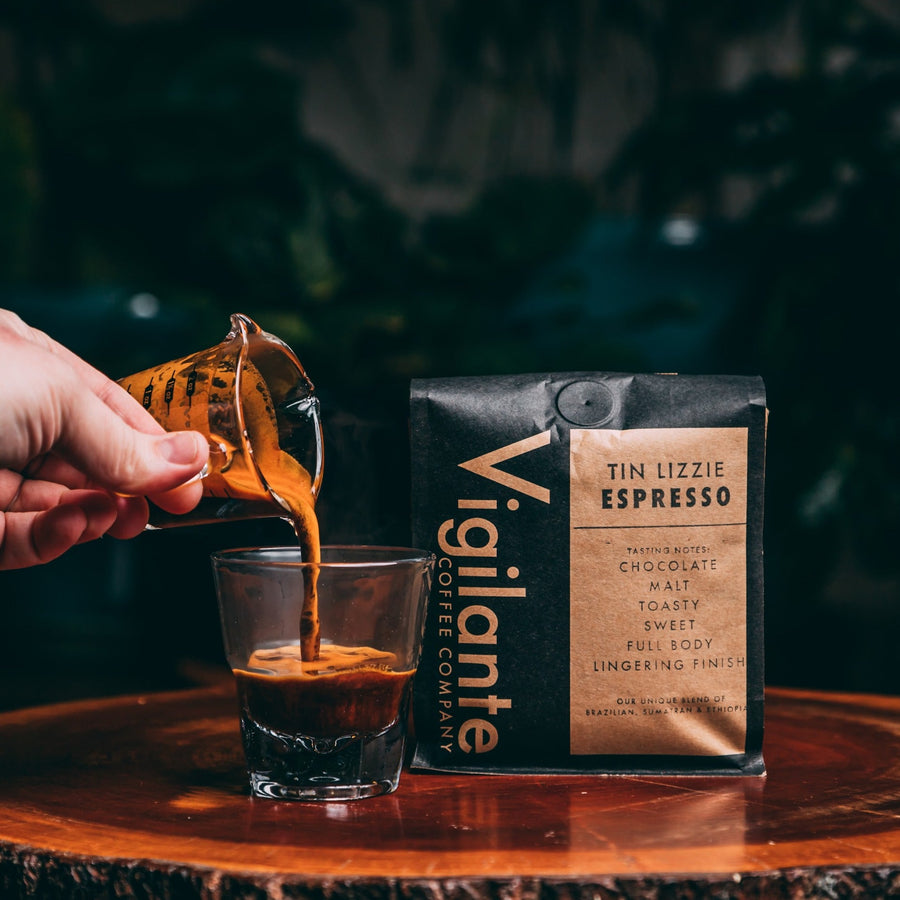Understanding Coffee Beans: the Trip From Coffee to Blended Coffee Beans

The Origins of Coffee: A Global Viewpoint
While you may think about coffee as a contemporary staple, its beginnings trace back centuries, linking with cultures throughout the globe. The tale begins in Ethiopia, where tale states a goat herder named Kaldi discovered the energizing effects of coffee beans after seeing his goats romping energetically after consuming them. This triggered rate of interest, resulting in coffee's infect Arab investors that treasured the brewed drink. By the 15th century, it reached Persia, Egypt, and Turkey, where coffeehouses came to be social centers for conversation and society.
As trade paths broadened, coffee made its way to Europe in the 17th century, promptly getting appeal. It transformed from a magical beverage right into a daily routine, intellectual exchanges and inspiring gatherings. Each society included its one-of-a-kind spin to coffee preparation, improving its background. This worldwide journey highlights exactly how coffee connects us, transcending boundaries and joining varied customs via an easy bean.
Growing and Harvesting of Espresso Beans
As coffee's journey progressed, the focus shifted to the farming and harvesting of certain bean varieties, particularly those used for espresso. You'll locate that coffee beans commonly come from Arabica or Robusta plants, each offering distinct flavors. The ideal expanding problems consist of high elevations and rich, well-drained dirt, which boost the beans' quality.
Throughout the harvest, picking approaches vary. In some regions, employees hand-pick ripe cherries, ensuring only the most effective fruit mosts likely to processing. In various other areas, mechanical farmers are utilized, specifically on larger ranches. Timing is essential; you intend to gather when the cherries get to peak perfection for optimum flavor.
When collected, the beans are prepared for handling, which is essential in identifying their final preference. Understanding the growing and collecting procedures gives you insight right into what goes right into your favorite espresso, enhancing your appreciation for each and every cup.
Handling Methods: From Cherry to Bean
Currently that you have actually found out about gathering espresso beans, allow's check out exactly how those cherries transform into the coffee beans you enjoy. You'll see just how different harvesting techniques influence taste, followed by the vital steps of fermentation and drying out. We'll break down the milling and grading process that identifies your coffee's high quality.
Harvesting Techniques Discussed
When it comes to coffee, recognizing harvesting techniques is important, given that they directly affect the flavor and quality of the beans you enjoy. There are 2 main methods: careful picking and strip picking. Careful choosing involves hand-picking only ripe cherries, guaranteeing you get the finest quality beans. This method often results in a richer taste profile, though it's more labor-intensive. On the other hand, strip selecting methods collecting all cherries at once, no matter perfection. While it's quicker and more affordable, this can result in a mix of flavors, impacting the end product. Ultimately, the option of gathering strategy can significantly influence your coffee experience, so it deserves knowing just how those beans made it to your mug.
Fermentation and Drying
After harvesting, the next action in processing coffee beans play a significant function fit their taste. You'll locate that fermentation is important, as it aids break down the mucilage surrounding the beans, improving their taste profile. Relying on the approach, this process can last from a few hours to several days, with varying results based on temperature and moisture.
As soon as fermentation is full, drying out adheres to, which is similarly vital. You can pick from sun-drying or mechanical drying methods. Sun-drying enables the beans to soak up flavors from the setting, while mechanical drying assurances consistent wetness levels no matter weather. Proper drying is essential to stop mold and mildew and maintain the beans' quality, ultimately influencing your cup of coffee.
Milling and Grading Process
As fermentation and drying set the stage for taste development, the milling and grading procedure assurances that only the very best coffee beans make it to your cup. This phase entails getting rid of the outer layers of the coffee cherry, consisting of the parchment and husk. After milling, the beans are arranged by size and weight, ensuring a consistent high quality. You'll discover that grading helps recognize issues and classify beans, which impacts flavor and aroma. High-quality beans obtain a higher grade, resulting in a richer coffee experience. Once rated, the beans are ready for packaging and shipping, maintaining their distinct features. This thorough procedure is crucial for supplying the remarkable preference you enjoy in every sip of your favored mixture.
Roasting Strategies: Unlocking Taste Possible
When you roast coffee beans, the method you choose can substantially influence the taste profile. Understanding the partnership between time, temperature level, and roasting strategies is crucial to revealing the capacity of your brew. Allow's discover exactly how these aspects integrated to produce the best cup.
Toasting Methods Described
While you could believe that all coffee toasting techniques yield the same results, the reality is that each method reveals unique flavor possibilities in the beans. Drum roasting makes use of a turning drum to equally disperse warm, improving caramelization and creating a balanced taste. Air roasting, on the various other hand, distributes hot air around the beans, promoting a lighter roast with pronounced acidity.

Influence On Taste Account
Different toasting methods not just affect the process yet likewise significantly affect the flavor profile of the coffee beans. Dark roasts, on the other hand, bring out strong, great smoky tastes, sometimes covering up the bean's distinct attributes. Understanding these subtleties assists you appreciate the creativity behind your cup of coffee, improving your overall experience with every sip.
Time and Temperature Level Aspects
To launch the full taste capacity of coffee beans, both time and temperature throughout the roasting process play significant roles. When toasting, you'll locate that greater temperatures can swiftly establish tastes, however if you hurry it, you may wind up with burned notes. Alternatively, reduced temperatures allow for a much more steady flavor advancement, showcasing the beans' special attributes.

Timing is just as essential; prolonging the roast as well long can result in a loss of level of acidity and brightness, while also brief a roast could leave the beans underdeveloped. Locating that sweet place needs method and experimentation. By adjusting these factors, you can disclose the abundant, complicated tastes concealed within each bean, producing a really impressive coffee experience.
The Art of Mixing: Crafting Special Coffee Profiles

Begin by selecting a base coffee that gives a strong foundation. A brilliant Ethiopian bean can bring fruitiness, while a rich Brazilian coffee includes body.
As you mix, bear in mind that each mix narrates. You're not simply making coffee; you're producing an experience. So, take your time, preference regularly, and delight in the journey of discovering your signature mix.
Developing Techniques: How Preparation Impacts Taste
Blending coffee opens a domain of flavor opportunities, but how you brew that mix can considerably influence your last mug. Various brewing approaches draw out distinct tastes and fragrances, so it's important to select sensibly. For instance, a French press enables sediments and oils to remain, producing an abundant, robust experience. On the other hand, a pour-over highlights the coffee's quality and brightness, best for showcasing delicate notes.
Coffee, with its high pressure, creates a concentrated shot that emphasizes sweet taste and crema. If you prefer a lighter brew, consider a cold brew approach; it generates a smooth, less acidic taste.
Readjusting variables like water temperature, grind dimension, and brew time can change your coffee's account. Accept the art of brewing to uncover the flavors concealed in your coffee blends.
The Future of Coffee: Sustainability and Innovation
As the coffee industry progresses, sustainability and development are ending up being vital for addressing environmental challenges and conference customer demands. You'll notice that even more coffee companies are taking on environment-friendly techniques, from sourcing beans morally to carrying out sustainable farming strategies. These shifts not only assist the earth however likewise boost the high quality of the coffee you take pleasure in.
You could see innovations like biodegradable product packaging and water-saving developing methods that lower waste. Advanced innovation, such as blockchain, is additionally ending up being preferred, making certain transparency in the supply chain, which enables you to trace your coffee back to its origins.
In enhancement, investing in neighborhood neighborhoods and supporting farmers via fair profession campaigns promotes an extra lasting coffee ecosystem. As you drink your following cup, keep Single Origin Espresso in mind that your selections can contribute to a brighter future for coffee. By choosing lasting brand names, you're not simply delighting in a beverage; you're making a favorable effect on the globe.
Often Asked Concerns
What Is the Distinction In Between Arabica and Robusta Beans?
Arabica beans are smoother, sweeter, and have a higher level of acidity, while robusta beans are more powerful, extra bitter, and have more caffeine. You'll see these differences in taste and aroma when making your coffee.
Just How Does Altitude Affect Coffee Bean Taste?
Altitude influences coffee bean taste substantially. Greater elevations create beans with brighter acidity and facility tastes, while reduced elevations often generate beans that are heavier and less nuanced. You'll discover these distinctions in your cup!
What Are the Health And Wellness Perks of Alcohol Consumption Coffee?
Consuming alcohol coffee can boost your energy, enhance psychological focus, and even improve physical efficiency. It's abundant in anti-oxidants, may decrease the threat of certain diseases, and can promote a much healthier metabolic process when consumed in small amounts.
Can Coffee Beans Be Recycled for Brewing?
Yes, you can reuse coffee beans for brewing, however the flavor may be weaker. If you enjoy trying out, attempt reusing them in various ways, like cold brews or contributing to smoothie mixes for an additional kick.
How Should I Store Coffee Beans for Freshness?
To maintain your coffee beans fresh, save them in a closed container in a cool, dark place. Avoid revealing them to light, wetness, or warmth, as these aspects can rapidly degrade their flavor and scent.
Understanding Coffee Beans: the Trip From Espresso to Blended Coffee Beans.
Currently that you have actually learned regarding harvesting coffee beans, let's explore exactly how those cherries transform into the coffee beans you love.When you roast coffee beans, the approach you select can considerably impact the flavor profile - Single Origin Espresso.While you could think that all coffee toasting approaches generate the exact same results, the truth is that each technique discloses distinct taste potentials in the beans.Different toasting methods not just influence the procedure but also greatly impact the taste account of the coffee beans